This is a Thowe Thowette, a compact rigid bodied camera that shoots 3cm x 4.5cm images on 127 format roll film. It was built by a Dresden area based company called Thowe for some years in the late 1920s through the early 1930s. Very little is known about Thowe other than it produced a number of inexpensive folding and non folding cameras before going bankrupt in the early 1930s.
Film Type: 127 Roll Film (sixteen 3cm x 4.5cm exposures per roll)
Lens: 5cm f/4.5 C.Friedrich Munchen Corygon-Anastigmat uncoated 3-elements
Focus: 1 meter to Infinity
Viewfinder: Flip Up Scale Focus
Shutter: Pronto Leaf
Speeds: T, B, 1/25 – 1/100 seconds
Exposure Meter: None
Battery: None
Flash Mount: None
Weight: 324 grams
Manual: None
How these ratings work |
The Thowe Thowette is an unremarkable entry level camera from an obscure Dresden area camera company that was one of the early victims of Germany’s pre-war economic struggles. It’s history and feature set is thin, but that doesn’t mean it still can’t be a fun camera that produces images with a certain vintage flair. If you’re looking for a camera to produce contrasty and consistently sharp images, this isn’t it, but it does have it’s charm and looks great on a shelf. | ||||||
| Images | Handling | Features | Viewfinder | Feel & Beauty | History | Age | |
| 1 | 1 | 0 | 1 | 1 | 1 | 40% | |
| Bonus | none | ||||||
| Final Score | 7.0 | ||||||
In what will likely be my shortest History section of a review ever, this is a Thowette folding camera made by Thowe Kamera Werk A.G. of Freital, Germany…
I don’t usually do this, but camera-wiki did such a good job covering the entire known history of Thowe, I’m just going to plagiarize them with a screen shot of the entire article.
…and that’s it. Never before have I found so little history on a camera maker than Thowe. I checked my usual sources for old information, old photo catalogs, the German version of Wikipedia, the Wayback Machine, even my 1988 McKeown’s guide to cameras, and there’s nothing. All I could dig up was this advertisement for Thowe from around 1923 that uses the word “Aktien-gesellschaft” which confirms they were a publicly traded company.
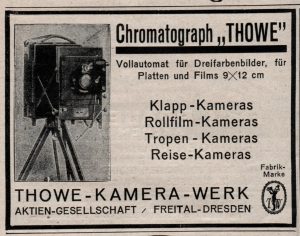
Obviously the company existed, otherwise this camera wouldn’t be here, but they were clearly a small shop whose influence on the Dresden area camera industry was very small.
There’s no way to know for sure when this camera was produced other than making an educated guess. Knowing that Thowe likely ceased to exist after 1932, it had to be made before that, and it’s dial set Pronto shutter suggests a date prior to 1930 when rim set shutters started to become common. Neither Pronto shutters nor C.Friedrich Munchen lenses have any known serial number data base, so dating the camera using those isn’t possible.
And that’s it. No Central Camera catalog pages showing how it was advertised or even how much it cost new. It’s low end shutter and lens and lack of bellows suggest this was an entry level camera that likely didn’t sell for much. I can’t tell you the exact year it was made, nor do I know anything about the company that built it, other than what is already here.
My Thoughts
Cameras that use 127 format film have a certain fascination for me as they can usually be divided up into one of two broad categories. There was the compact folding 127 camera that evolved from the first Kodak Vest Pocket and turned into high quality little shooters like the Kodak Vollenda 48 and Ihagee Auto-Ultrix 2850 and then there was the horde of cheap plastic point and shoot cameras made by Kodak, Imperial, and ANSCO.
Of course there are exceptions like the Bell & Howell Electric Eye 127 and Kodak Brownie Starmatic that innovated the use of automatic exposure with their electric eye meters and fully automatic operation, but for the most part, early 127 cameras were generally quite capable, and later ones, not so much.
One day, I came across a curious little non-folding camera that was obviously a German made pre-war design, yet it had a very simple shutter and lens. The seller of the camera listed it as a “Vintage German Camera” which although not incorrect, did not help me identify it. I don’t often buy cameras that I don’t even know what they are, but in this case, the price was cheap enough I took a gamble.
After getting it and seeing that it was in good operating condition, I noticed the embossed logo in the body covering that was in some type of German script that was difficult to read. I saw what looked to be a “J” and then a couple letters and what looked like “elle” or “ette”. Knowing that early Ihagee made cameras often had a logo that looked like “Jhagee” as it was common for German script to write an “I” like a “J”, I thought perhaps this camera was some kind of Zeiss Icarette. It certainly made sense as Zeiss made a huge number of Icarette cameras in the late 1920s and throughout the 1930s, so perhaps this was some kind of entry level Zeiss.
I looked online at every image I could find of old Icarettes and none looked like this camera. For one, this camera didn’t fold. The shutter and lens were mounted to a rigid tube that had to be pulled out like a collapsible Elmar, but it wasn’t common for Zeiss to build a camera and not use one of their own lenses (it did happen, it just wasn’t common), so I began to doubt the identity of this camera.
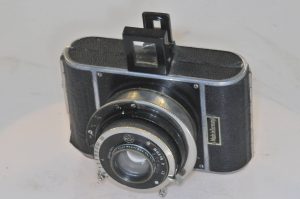
It wasn’t until I posted an image of this camera on the Vintage Camera Collectors Facebook group when master collector, Ira Cohen quickly identified it as a Thowe Thowette. Confirming his identification, he produced images of several Thowettes from his own collection. Mystery solved!
Of course, if you’ve already read the history section above, you’ll know that apart from Ira’s identification of the model, and a couple of extremely short blurbs about the company online, there was little else to learn about the Thowette or the company who made it.
When it comes to using the Thowette, there’s not much to say. The camera is very basic. All of the critical camera controls are on the shutter including the shutter release. This example came with a threaded shutter release cable which I kept on the camera throughout it’s first roll. The top and bottom plates are quite barren, save for the film advance knob, 3/8″ tripod socket, and flip up viewfinder.
The back of the camera opens via a sliding latch on the side revealing a rather ordinary film compartment. Like most 127 cameras, film loads from right to left.
The film door has two red windows which are both required to properly advance the film. This camera shoots “half frame” 3cm x 4.5cm images, and the backing paper for 127 film does not have the necessary exposure numbers for that size, so you must use each number twice. When you start a new roll, you must advance the film until the number “1” shows in the right window. After exposing your image, advance the film until the number “1” is in the left window and make your 2nd exposure. Then advance the film until the number “2” shows in the right window for your 3rd exposure, and then again until the number “2” is in the left window for the 4th exposure. Keep doing this until the number “8” is in the left window, at which time you make your 16th and final exposure.
Showing it’s economy roots, the Thowette lacks any sort of door or cover to block stray light from passing through the two red windows in the back of the camera. This wasn’t that big of a deal when this camera was first made, as most film back then was relatively slow and would not have been bothered by stray light passing through the red window, but film available today is much faster and more sensitive to light, so you’ll want to take extra caution to either cover these red windows, or keep them shielded from direct sunlight.
Like many pre-war German cameras, the Thowette came with a variety of lens and shutter combinations, so the use of the camera would vary from sample to sample. Ira Cohen, who originally helped me identify what this camera was, has three in his collection and none of them have the same shutter and lens combination as the one here.
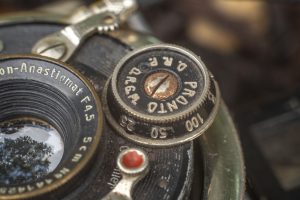
The dial set Pronto shutter has only 3 speeds plus T and B modes. The red tipped lever is the self-timer which is a curious addition to such a basic camera. The shutter is a self-cocking design which means that there is no separate cocking lever. The shutter cocks and fires with a single motion of the shutter release lever (or in this case, a press of the plunger on the shutter release cable) so special care must be taken to not accidentally fire the shutter when taking it in and out of a camera bag.
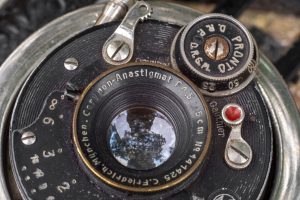
Focusing the camera is accomplished by rotating the front lens element and aligning the metal post with one of the engraved markings (in meters) below the lens. The focus ring on this camera was very loose and could easily get bumped while shooting. As this is the only Thowette I’ve ever come across, I cannot say whether others would be the same way, but considering most cameras seem to tighten up over the years, and not loosen, I have to imagine this is probably how it always was.
Finally, near the bottom of the shutter is a lever for controlling the iris. On this example there are markings for f/4.5 through f/16.
And that’s it! Oh, DON’T FORGET TO EXTEND THE SHUTTER BARREL BEFORE SHOOTING! Remember, this camera has a collapsible lens and shutter design, which if you forget to do will cause every single image to be extremely blurry!
My Results
With the winter months coming to an end in early 2019, I looked at my collection of cameras and picked out a few that I thought might benefit from the dreary scenery of the season. There is this old burned out barn and grain silo near my work that is a favorite photographic stopping point for me, and I recently came across a large supply of Supretone 127 black and white film that had expired sometime in the 1960s, so I picked the Thowette for it’s inaugural roll.
I thought it was a fitting choice as the Thowe is such an obscure camera, and Supretone is an obscure film, and here I was about to photograph a forgotten structure that had long since been abandoned. I cannot tell for certain if the fire that obviously damaged the structure is what caused it to be abandoned in the first place, or if it happened after.
The Supretone film shot in this camera came to me in a batch from my friend Adam Paul. I had previously vetted the film in an update to my review for the Yashica 44 and I know that despite it’s age, still returned clear and contrasty images with nary a hint of it’s 50+ year age. It shoots at around ASA 50, so I thought that would be a perfect speed for what likely was a sluggish shutter.
I knew that the simplicity of the Thowe’s shutter and lens would be no match to the excellent Yashikor lens from the Yashica 44, but I was hopeful that the images would be at least decent, and I think “decent” is what I got. There were a few light leaks, contrast was lacking, and I missed focus a couple of times, but I was pretty happy with the results I got from this ancient and obscure camera. Uncoated lenses often flare easily and struggle with contrast, and although the C.Friedrich Munchen Corygon lens wasn’t in bad shape, it had an understandable amount of dust, debris, and scratches on it further reducing contrast.
The images I got from it have a very “old-timey” look that complimented the burned down barn and grain silo that I shot. This location is a favorite of mine to shoot with black and white film because it is very close to where I work, and is only accessible in winter (due to massive overgrowth…and spiders) when black and white film is more appropriate to shoot.
I had fun shooting the Thowette, but it’s limited shutter speeds and imprecise focus, combined with the fact that it requires relatively uncommon 127 film means I’ll likely not shoot it again. That’s not necessarily a bad statement against the camera as it did what I expected it to, but it did it in such an unspectacular way that I think the next time I’m in the mood to shoot half frame 127, I’ll pick one of the other more capable cameras in my collection. Of course that doesn’t mean it isn’t a worthy addition to a collection, but my recommendation would be as a display piece only.
Related Posts You Might Enjoy
External Links
http://camera-wiki.org/wiki/Thowe
https://www.photo.net/discuss/threads/tell-me-about-this-camera.298014/

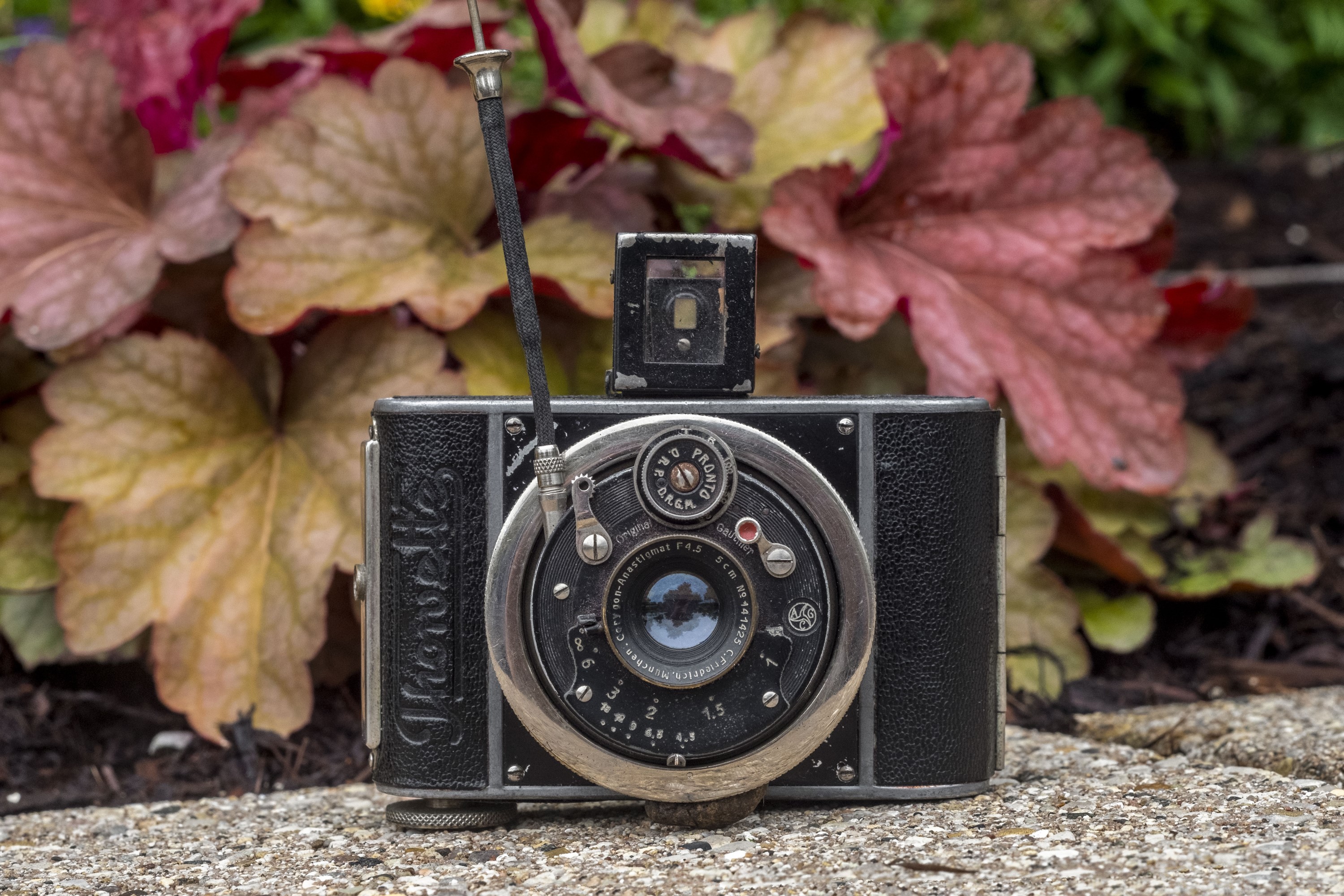
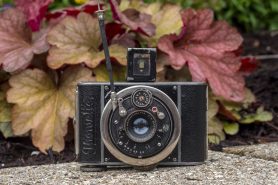
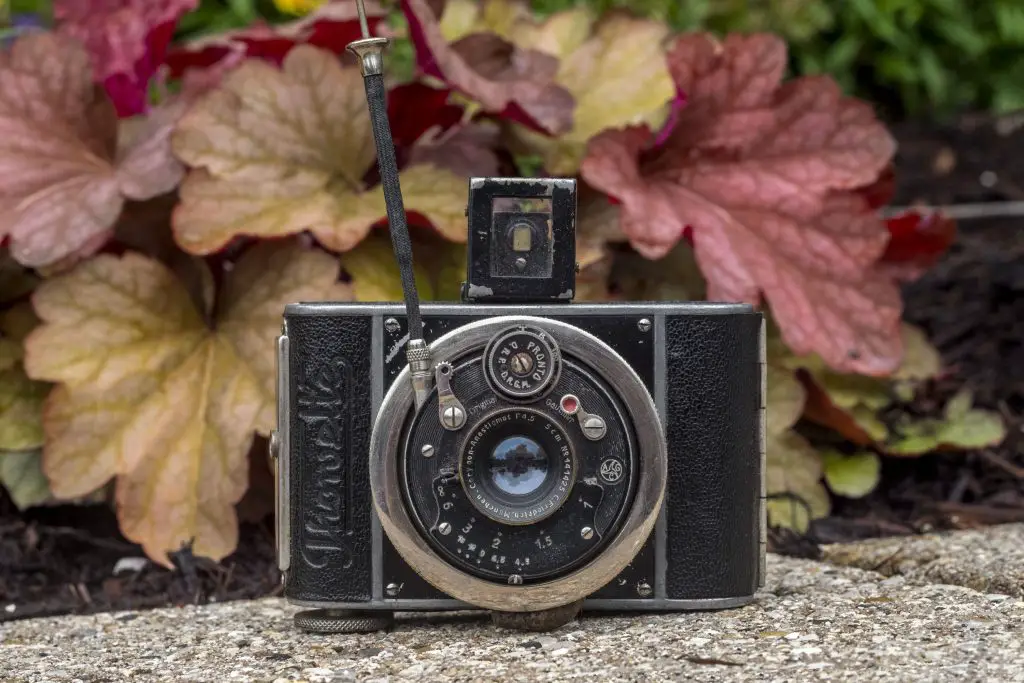
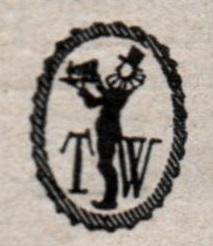

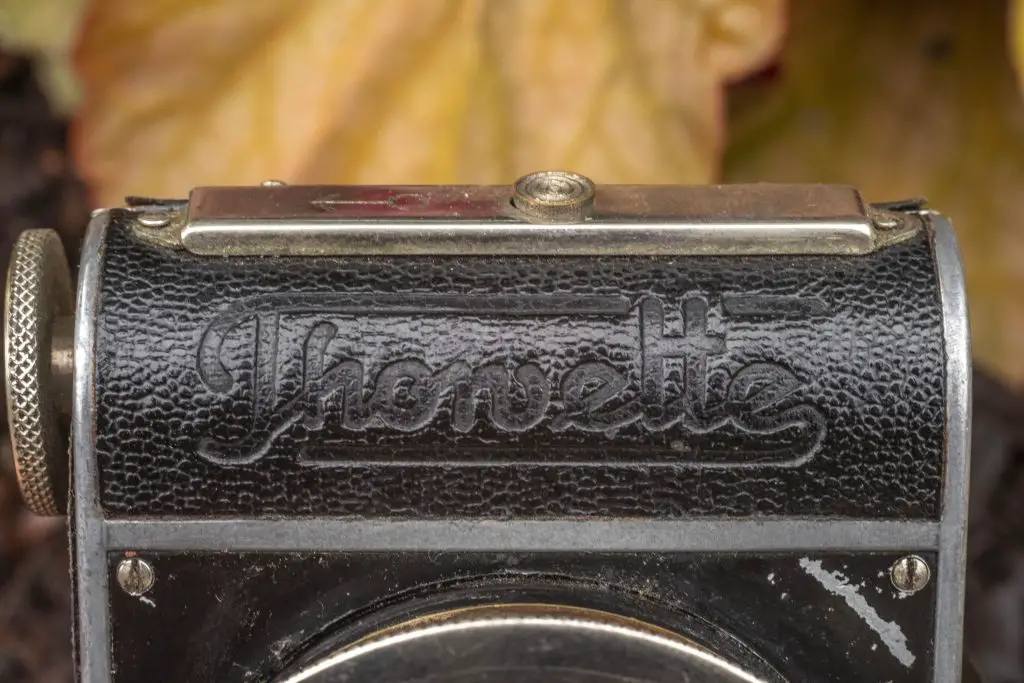
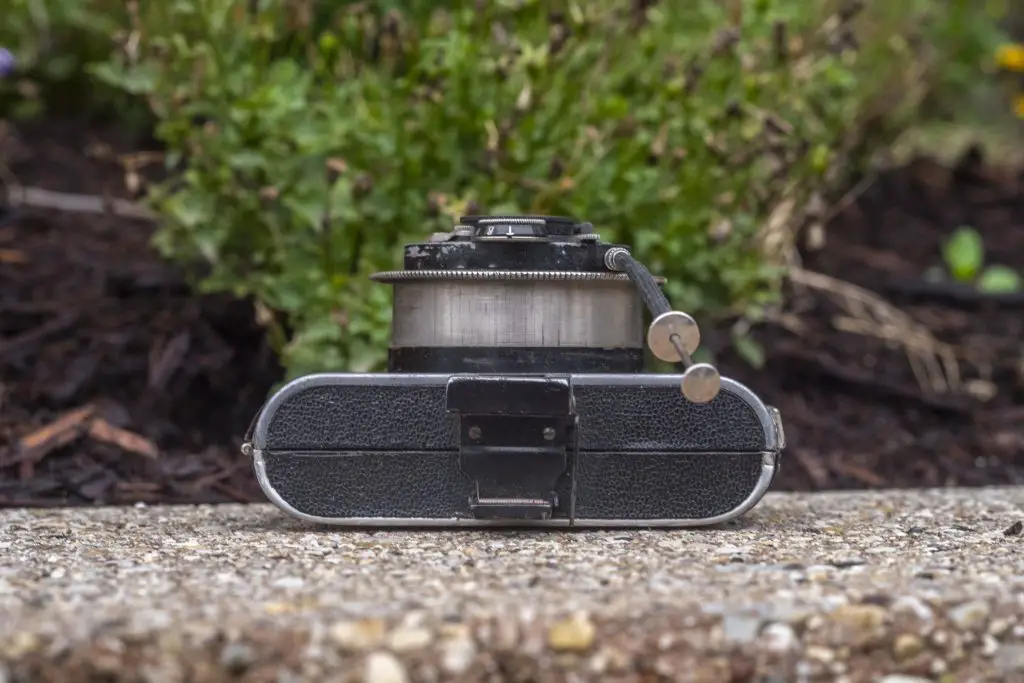
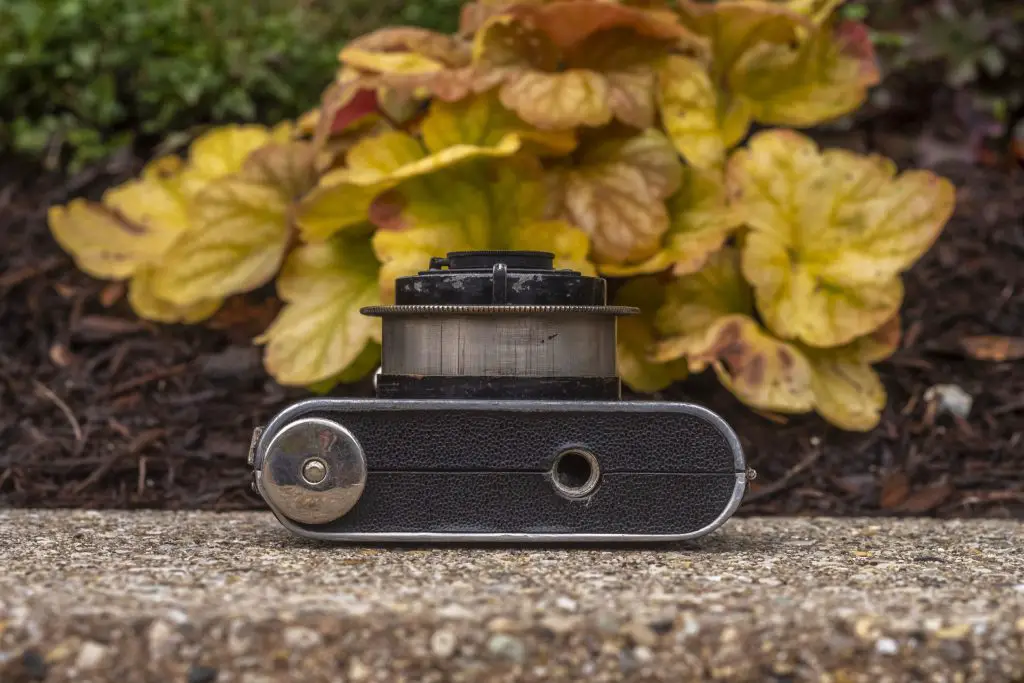
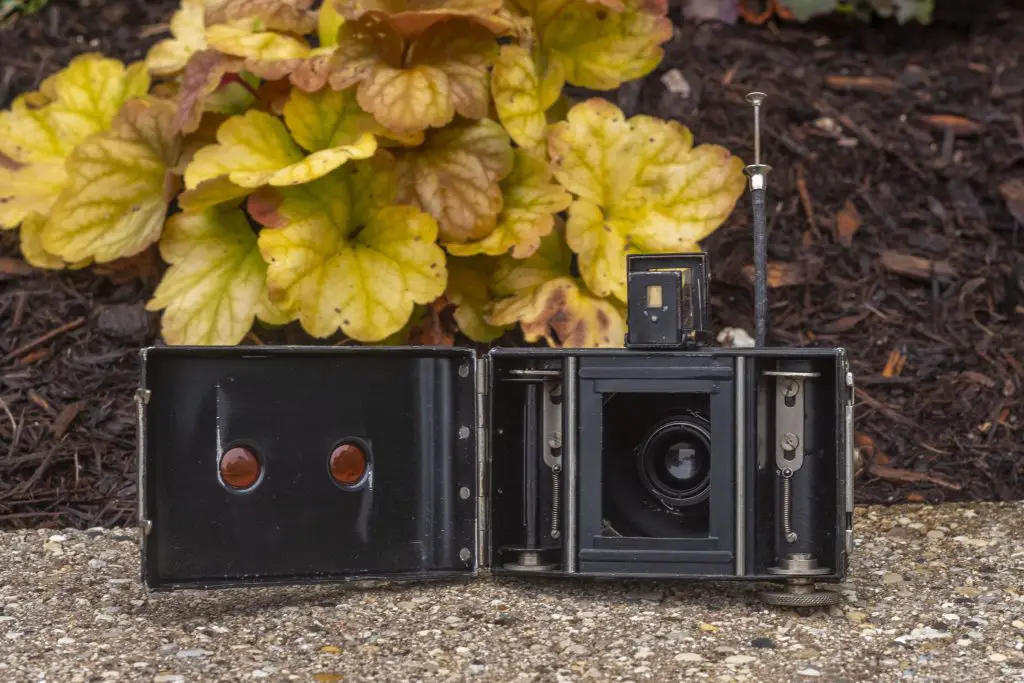
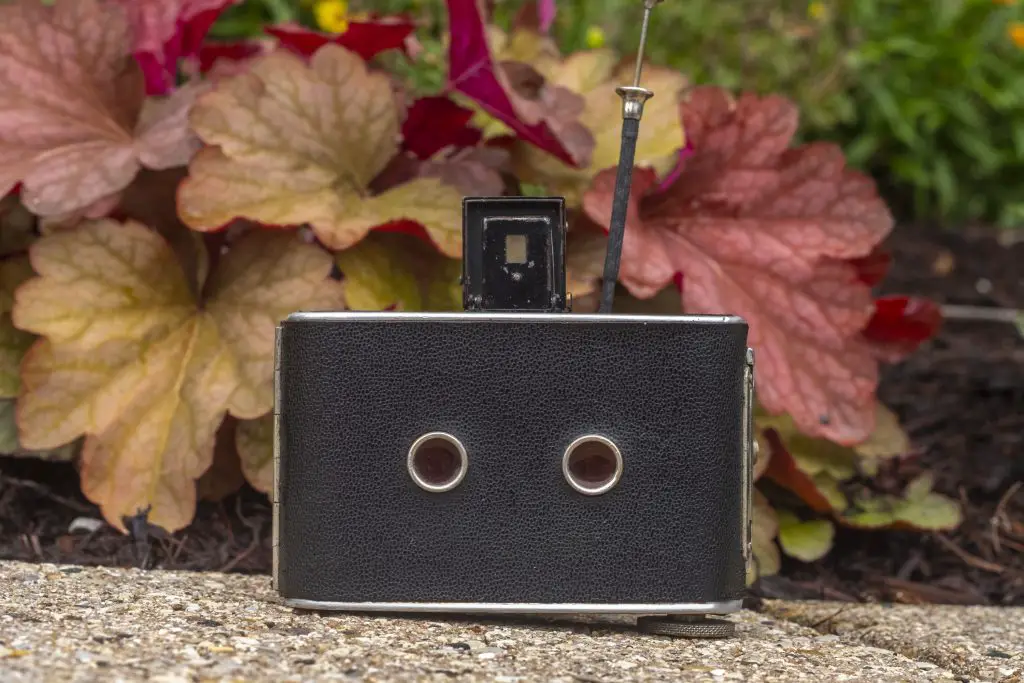








Mike, what is really interesting is the advert for the Chromatograph and which shows that the Company was into 3-image colour photography. Something far more advanced than the very basic camera here.
I did actually find what claimed to be a Thowe advertisement in a Japanese language magazine from the 1920s, but I couldn’t confirm what it said, since I don’t know Japanese, and even if I did, it didn’t look all that interesting, so I did not include it.
Mike, this reader really enjoys your reviews of these 70- and 80-year old rollfilm cameras. The images you share with us are a treat: Your composition and lighting, plus your choice of film stocks, makes your photos look as if they were made when these cameras were new. This kind of review is rare in the online analog community … I am getting a bit weary reading tales of Leica M6’s and plastic fantastic 1980s point’n’shoots that seem to dominate the web. Thank you for what you’re doing!
Thanks for the kind words, Roger! The more interesting a camera is, the more fun I have reviewing it! Although I didn’t find a lot of info on the Thowe, it was a pleasure to dig up what little I could. I also try to keep the 80s and 90s point and shoot cameras limited to only those that are truly different or special!